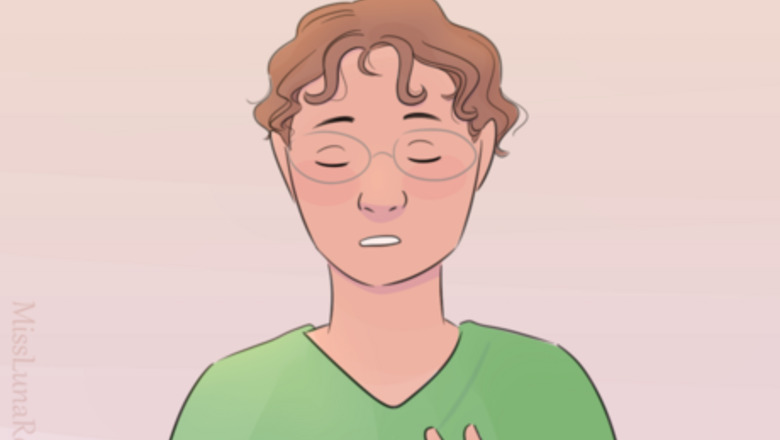
views
Disclaimer: This article focuses on children who lash out at others. If the child is only hurting themselves, check out How to Redirect an Autistic Child's Harmful Stims.
- Stay calm during an outburst and clearly say "no" to the child. Instead of saying "you can't," explain why they shouldn't behave in a certain way.
- Give them a safer outlet for their feelings if they need it, like hitting a soft piece of furniture.
- If the child is able to listen, remind them that their feelings are valid. From there, explain the rules again and set clear limits.
- Encourage your child to go to a quiet or safe space. Make sure that they don't feel trapped, and give them space if they need it.
How can you calm down an aggressive autistic child?

Stay as calm as you can. Many aggressive incidents happen when a child is overwhelmed and panicky, and cannot handle the stress they're under. It helps if the people around them can be a calming influence. Work on cultivating an attitude of calm compassion. Take some deep breaths, and compose yourself as best as you can. Remember that their behavior isn't a negative reflection on you. All kids act out, even under the care of good people. Treat this like an expression of frustration or panic or overwhelm, rather than hatred or rebellion. Avoid adversarial behavior, like yelling, making ultimatums, or taking away privileges. Punishment tends to make the child even more agitated. Keep your cool and focus on de-escalation. It's better to leave than to scream at a child. Say, "I am overwhelmed. I need to take a break," and leave the room until you can handle yourself. Modeling this kind of self awareness and control also helps the child learn that everyone needs breaks to calm down, at times.Did You Know? The first step towards calming a child is calming yourself. "Co-regulation" helps a child regulate their nervous system and calm down. Try to speak in a calm voice and help them feel safe with you. If you act calm and gentle, it'll help them become more calm and gentle.

Say "no" clearly. The child needs to know that this behavior is wrong, and that you do not approve. Use a firm voice, loud enough that they can hear over any tantrum behavior. Say something like, "Hitting is not okay," or, "That hurt! I'm not going to let you hurt me." Avoid saying "you can't," because that's technically false. For example, if a girl pulls her sister's hair, and you say, "You can't pull her hair," that will sound like a lie, because she just did it. Instead, say "It's not safe to pull her hair!". Statements such as "you don't"/"you're not" should also be avoided, for similar reasons. Rather than saying "You don't throw things" or "You're not hitting your brother", try saying "You shouldn't throw things" or "It's not nice to hit your brother". Be consistent. Don't ignore a child who hits one day, and then yell at them the next day. Make sure that any "no hitting" rules are enforced for all children, not just autistic children. Get in the way if needed. For example, if your son is hitting your daughter, get in between the two of them and say, "I won't let you hurt her."
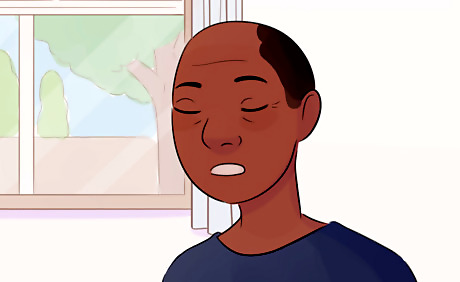
Tell them what they can do instead, if they need an outlet. Avoid simply telling them what they shouldn't do; also tell them what they can do. This helps them find a better outlet for their feelings, and helps them picture what they can do instead. You might say something like... "Don't hit Dad! Hit the couch." "No pushing me! It hurts! Go push the wall." "Go to your punching bag."
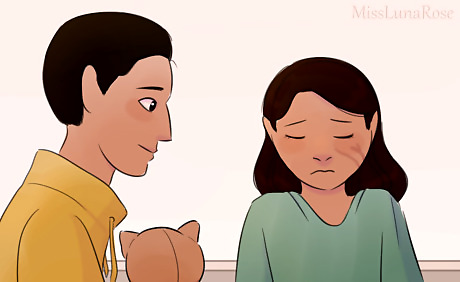
Validate the feelings of a child who can listen, and then re-explain the rules or redirect the child. Sometimes, children act out because they're upset about something and don't know how else to communicate it. If your child is calm enough to listen to reason, talk to them about it. Set a loving limit, and stick to it, while encouraging them to express themselves positively. Helping them feel heard, while setting clear limits, can help them get back on track. "I see you're upset about needing to go home. You're allowed to tell me that you're unhappy. It is not okay to hit me, no matter how upset you are. Now let's get in the car. Mommy is waiting for us." "Something is stressing you. I know being scared or mad is never a good feeling. If you'd like to talk about it, I'll listen." "I saw that you were mad that your brother took your doll. That doesn't make it okay to kick him, because kicking hurts people. If he does it again, tell him no. If he doesn't listen, ask for help instead of kicking." "I'm sorry that you're upset. I can tell something is stressing you out. That doesn't make it okay to bite people when they don't do what you want. If you want to use your words, or type on your tablet, you can tell me why you're upset and I'll listen." "I don't know what to do when you hit. It makes me stressed, and I want to keep everyone safe."

Keep any words short and to the point during an emotional crisis. If an autistic child is melting down, they are in a state of total panic. They can't process lectures or wordy discussions, because they are too overwhelmed to listen to reason. Limit your words to short sentences, until the child has calmed down. Example of unhelpful speech during a meltdown: "It is not okay to hurt your brother! That hurt him. Hurting people is wrong. I am very disappointed in you. I raised you better than this. You need to say sorry!" Example of helpful speech: "No hitting people! Go hit the couch." (An apology can come later.)
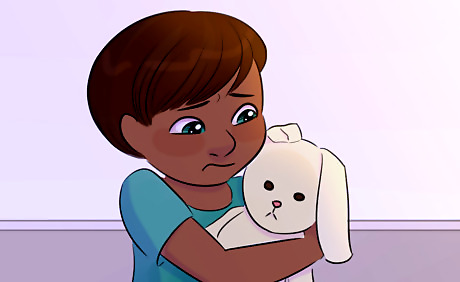
Never discourage odd-but-harmless coping mechanisms. When an autistic child is in acute distress, it's natural for them to start stimming in a way that helps alleviate it. Assume that these are self-calming attempts, and that they are helping the child control themselves. If you take away the only thing that is stopping them from more hitting, then they will hit more. Things that help autistic people cope include... Repeating words and phrases, like "Hit cushions, not people," or, "It's okay, you're safe." Staring at toys or favorite things Kicking at or hitting objects (e.g. pounding their hands against the armrest of the chair) Rocking Humming or singing Putting things in their mouth
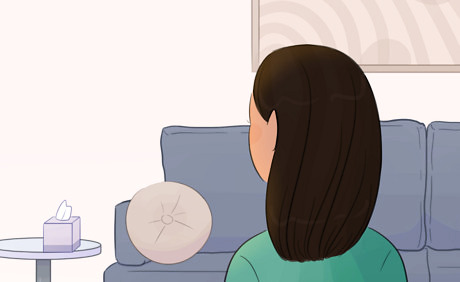
Try telling them to go somewhere quiet and safe. If the child has a "safe place" to retreat to, such as their room or a favorite corner, then it may help for them to go there. The child will probably want alone time once they've escaped. Help make sure that other people know to leave the child in peace for a while.

Give them space, and don't crowd them. Aggressive incidents may happen when a panicked autistic person feels trapped, so don't trap them. Stay at arm's length, or farther away, until they are calm enough to be approached. Never trap them or block their exit, as this may cause them to panic and lash out. Never try to restrain them; both of you could get seriously hurt. Some children do find bear hugs calming when they're upset. To ensure that it's done with permission, you can offer a hug by spreading your arms and seeing if they come to you. (If they don't, assume that they aren't in the mood for a hug.) Try staying on the other side of the room to supervise. This way, you're still there for them, while also respecting their space. If you want, you can show empathy through your body language (such as lying down too if they are lying on the floor crying). Leave them alone if they prefer. Some autistic children may look for a place where they can be alone (like hiding in a closet). If so, let them stay there without interruptions.
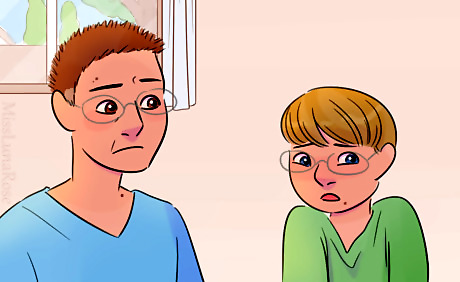
Talk to the child about the incident when they can think straight. If they are melting down, then let them calm down first, and if they are acting out, you can ask now. First, ask why they were upset, and why they hurt the person, and listen. Then, explain that hurting people is not okay. Tell them a better way to handle the situation, so they know what to do next time. Calming down after a meltdown may take an hour or two. This is normal, and the best way to help is by giving them space and alone time. Ask why they did it. Sometimes, a child just needs you to stay and listen while they "cry it out" or just sit with you. They may want you to sit next to them or hold them while they cry. They may be able to express what's really bothering them after they can let out their feelings. The child's explanation is very important. It can help you figure out the source of the problem, and how to make things better. For example, if the child hit Auntie because Auntie was going to kiss them even though they were protesting, maybe someone should talk to Auntie about respecting the child's boundaries.
Understanding Aggression
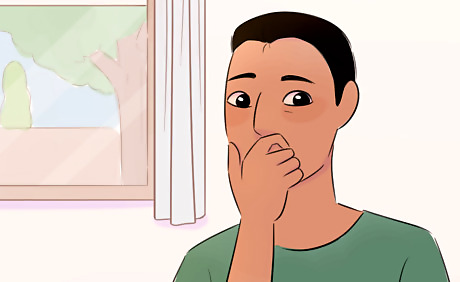
Look at why the child turns aggressive. Ask them if you can. If they can't give you an answer, or their answer isn't very clear, then try keeping a log, and noting anything that might trigger the behavior. Review what has been going on, and see if you can figure out why they act this way. Potential causes include... Mistreatment: Abuse, people being mean or punitive, people punishing them for autistic behavior or training them to act non-autistic (e.g. in some forms of ABA) Unhelpful interactions: Others escalating instead of de-escalating a crisis, people not paying attention to their communication, people steamrolling their boundaries or wishes, people not respecting their independence/abilities/free will Stress: Untreated anxiety, extreme stress from something in their life, lack of down time Lack of skills: Need for better self-calming skills, no ability to either speak reliably or use AAC so they become frustrated Learned behavior: Watching adults or children act aggressively, learning that adults give them what they want if they throw a big enough tantrum Sensory needs: Being instructed not to stim, unmet sensory needs, the child doesn't realize that hitting hurts people

Remember that behavior is communication. If a child is acting out, then they're trying to tell you that something is wrong. Instead of thinking, "What is wrong with the child?", think, "What is wrong with this situation?" Try to figure out what is causing the child to get so upset. Aggression can often be a cry for help.

Know the difference between a tantrum and a meltdown. A tantrum is thrown on purpose. During a tantrum, a child will appear "out of control" but chooses to act this way, will take care to avoid hurting themselves, is trying to accomplish something (and may check your face to see if it's working), and will immediately calm down if you give them what they want. A meltdown is the result of extreme stress. During a meltdown, a child has little self-control, will not monitor their safety, isn't trying to accomplish a goal, and will take a while to calm down afterwards. A tantrum is bad behavior. Wait patiently and don't give in. You can give a reminder like, "Kicking the floor will not change my mind. I will wait until you're ready to talk to me." Autistic children aren't immune to the regular tantrums that any child has. A meltdown is like a panic attack. They need to get to get to a quiet, private place to help them de-stress. They will probably need to just "have a good cry," and then rest. Give them patience and empathy; they aren't doing this on purpose.

Keep in mind that meltdowns and tantrums need very different interventions. A child who is melting down is suffering, and they need empathy and kindness (without punishment). A child who is throwing a tantrum can benefit from natural consequences, such as "I'm leaving the room if you're going to throw things." When in doubt, assume it's a meltdown. It's better to err on the side of being too kind, than to risk being too harsh to a child who needs some understanding.

Tailor your intervention to the cause. For example, a child who hits due to overstimulation should be treated differently than a child who hits people for fun without realizing that it hurts them.
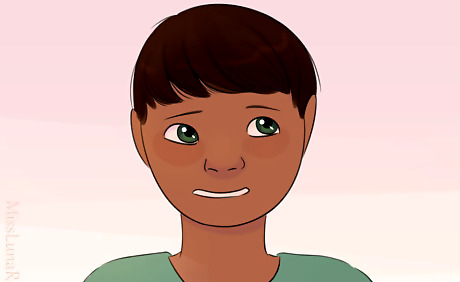
Remember that even intentional bad behavior is often a sign of a struggling child. Children might act out because they feel lonely, scared, or upset about something. If you try to figure out the real cause, you may be able to be there for your child, and let them "cry it out" and then feel (and behave!) better. Emotional support can make a big difference. Try seeing aggression as a desperate cry for help, whether the child intends to act this way or not. Sometimes, children target their siblings when they're really upset about their parents not paying enough attention to them (e.g. "you don't love me as much as you love him"). Giving loving attention can help defuse this.
Teaching New Skills

Make basic communication skills a priority. If the child doesn't have a way to communicate basic needs, teach them now (whether it's AAC or speech). Then build up more communication skills, so they can express desires, emotions, and ideas. The more they can communicate, the less pent-up frustration they'll have. If they can't communicate reliably, then they can't get their needs met. This can be incredibly frustrating. Start a nonspeaking child on AAC right away.
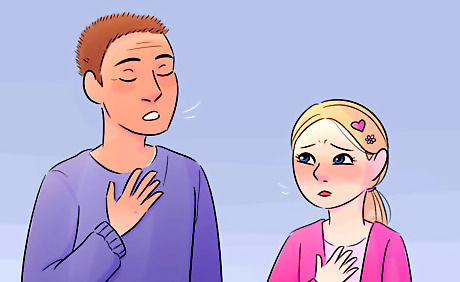
Talk about stress management skills. You can make a social story, list, or other written guide for handling stress. Hurting people is unacceptable, so what can the child do instead? Talk it over. Suggest strategies like... Saying phrases like, "I'm stressed," "I need a break," and, "I'm lonely" to adults Counting Taking deep breaths Saying, "I need a break," and going somewhere quiet for a few minutes Going to the bathroom and washing the face Hitting a bed or couch cushion (not a person)
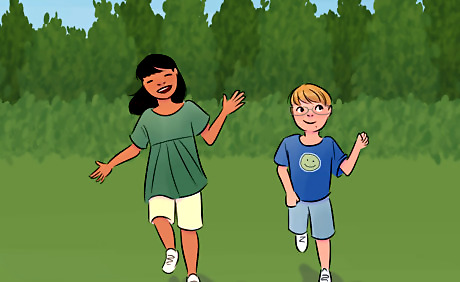
Find tools to redirect restless energy. Sometimes, children need a sensory outlet during tough times. Consider what kind of behavior they tend to do (e.g. hitting, pulling, biting) and how it could be redirected into a similar sensory experience that doesn't hurt anyone else. Punching bag (or couch cushions, or mattress of a bed) A doll's hair to pull A theraband (stretchy rubber band to pull) Chewy toys or jewelry to bite A miniature trampoline A weighted blanket, heavy beanbag chair, or other deep pressure item to put on the child A swingTip: Sometimes, silly play with a child can help them release anger or fear. For example, a pillow fight or chasing game might help redirect the child.

Encourage self efficacy. Give the child choices, so that they have a bit of control over their lives, and can succeed with ability-appropriate responsibilities.
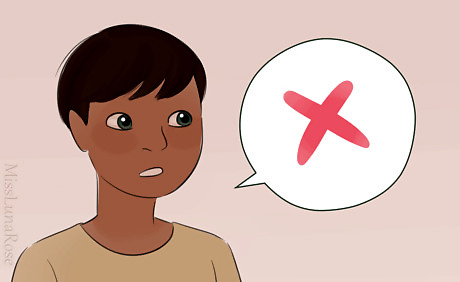
Work on assertiveness skills. Autistic children may struggle with assertiveness. Encourage them to tell you what they want, and listen closely, even if you can't honor their request. If you say no, empathize and tell them why. For example, "I know you'd like to stay at the park longer. It's lots of fun. We need to go back now so that we have time to eat and do our bedtime routine without rushing." Praise them when they tell you what they want. You can say, "Thanks for telling me what you think! You did a good job being assertive." Make sure you listen when they assert themselves, even if you don't like what they are saying. Acknowledge it, and show that you care. They'll only assert themselves if they learn that assertiveness actually works.

Explain that hitting hurts people. Some autistic children don't understand this, or don't realize that it's important. Explain that hitting and other forms of violence cause pain, and that this is not okay. Be gentle but firm about a no-violence rule. Hyposensitive children may feel pain less intensely, so they might not know they're hurting others. Explain it to them, and tell them constructive ways to get sensory input (like pushing a wall or hitting some couch cushions). Don't let other children (or adults!) get away with breaking a "no violence" rule. Speak firmly with them if you see them hurting someone or steamrolling someone else's boundaries.
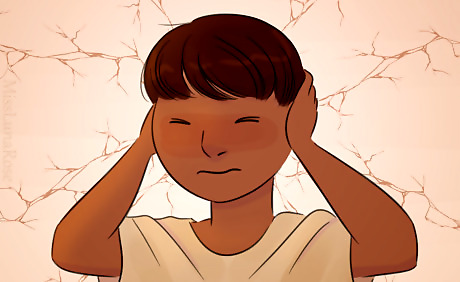
Help the child (and other people) recognize and handle triggers. Prevention is the best strategy. Autistic children may have more difficulty monitoring their emotional state, so it helps to have guidance and understanding from the adults around them. Read their behavior, and help them interpret how they're feeling. Ask gentle questions to help them figure things out, and let them correct you if you interpret their feelings incorrectly. Help them label their emotions. For example, if your child comes home from school cranky, you could ask, "Are you frustrated?" Help by suggesting healthy coping mechanisms. For example, you could ask, "Do you need to go swing for a little while?", or, "Do you need alone time?"
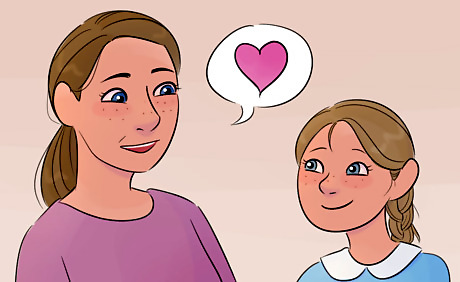
Praise the behavior that you want to see. Praising positive behavior can consolidate the gain, helping keep a child motivated to do their best. Here are some examples of praising a child for behaving well: "Great job telling me that you're overwhelmed! That was really good communication. You can go to your room, and I'll tell people not to bother you for a while." "It's so nice to be able to sit and play with you. I'm having a lot of fun." "I saw that you didn't throw anything even though you were really upset. It was nice to see you working on controlling yourself." "Good job taking a break when you got frustrated. You're a really good kid, you know that?" "I saw that even though you were really upset this afternoon, you didn't hit anyone, and instead you told me that you wanted to go sit in your corner. That was really cool. You are becoming so good at communication and it makes me proud."
Making Positive Changes

Take the child to the doctor for a check-up. Sometimes, aggression is a sign of a physical or emotional problem. If the health problem is fixed, the aggression may disappear. Discuss any signs of mental illness, like anxiety or depression, and how to treat them. Consider checking for food allergies or sensitivities. If the child is hurting themselves, e.g. head-banging, check the area that they are harming. For example, if they hit their head, maybe they are experiencing pain from a toothache, migraine, or lice.
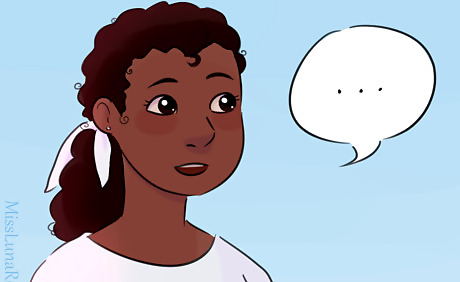
Work on your prevention skills. Notice when the child is getting cranky, overwhelmed, hungry, tired, or frustrated. This is the time to step in and help them cope. Know the child's triggers and help them before they feel the need to resort to aggressive behavior. Remove them from an upsetting situation. Remind them of what they can do to handle things. For example, "You can take a break if you need one." Be someone they can turn to. Speak gently and be supportive.

Protect the child from any violence, mistreatment, or abuse. If other people hurt the child, or hurt other children in front of the child, the child will learn that it's okay to hurt people. No one should hit, restrain, spank, or otherwise lay a hand on an unwilling child. This increases aggression and behavior problems. The child should not be hurt, upset, or frightened by someone's touch. Sensory pain is real pain. Take it seriously, and take steps to protect the child from something that hurts them, even if it's not painful to you. Someone who hates autism probably will not be kind to autistic children. Watch for red flags of a bad attitude.

Make sure that adults de-escalate, instead of escalate, stressful situations. All adults who care for the child should keep an eye for warning signs of stress, and give the child opportunities to calm down. If an adult behaves badly or insensitively towards the child, it may result in the child lashing out. If the child is overwhelmed, they need patience and time. Shouting at them, or trying to force them to follow directions, is a bad idea. Make sure that the child isn't grabbed or crowded if they don't want it. If they need space, they should have it.

Talk to other adults about respecting the child's autonomy and boundaries. Children can act out if they feel like it's the only way to get people to listen to them. Adults should pay attention to what the child wants, and do their best to honor reasonable requests. Affection should not be forced upon the child. The child has the right to say no to unwanted hugs and kisses. Give your child options, like high-fives, handshakes, blowing kisses, or just waving.

Make sure that adults aren't giving in to tantrums. If the aggression comes from goal-driven tantrums (as opposed to a meltdown), then adults need to be firm with the child, and not give in. For example, if the child wants cake but the adult says no, then the child throwing a tantrum shouldn't result in them getting cake. The adult should wait until it's over and then suggest a reasonable alternative, like a healthy snack.
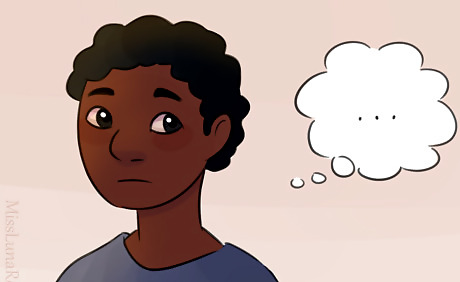
Look at sources of stress in the child's life. Have they been going through anything difficult lately? Losing a loved one, moving house, transitioning to a new school, or starting a new time-consuming activity (like intensive therapy) may be causing a lot of stress in the child's life. While the problem may not have an easy answer, you may be able to help the child cope with what is going on.
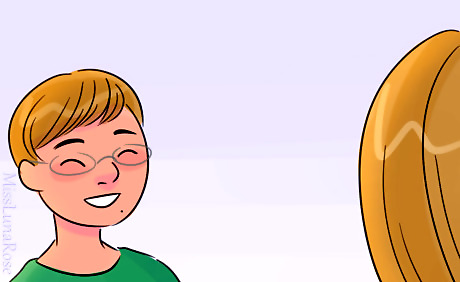
Make sure that the child doesn't have to go too far out of their comfort zone. Expanding the child's comfort zone should happen slowly and carefully. The child should also be able to say "no" to an uncomfortable activity if they feel they can't handle it right now. Pushing them too hard can cause them to get too upset. If your child is struggling with a task, be available to help. If your child is getting overwhelmed or upset, intervene. Let them take a break or do something relaxing.

Ensure that the child has enough relaxation time. Autistic children can get stressed easily, and they need more quiet time than average. It's crucial for them to have time to play or relax all by themselves, and relaxing time with other people is good for them too. For a younger child, an adult should be nearby to keep an eye on them. Older children can be left alone. They should have more than an hour of free time each day, to play quietly without being interrupted or bossed around. This is very calming, and can reduce aggression and other outbursts.

Keep building a positive relationship with the child. The child needs to bond with you, and have opportunities for praise and positive interaction. This helps them feel happy and safe, which helps reduce the risk of aggression. If a child feels like you listen to them and love them, they're more likely to run to you for help if they can't deal with a problem, instead of trying to solve it with their fists.
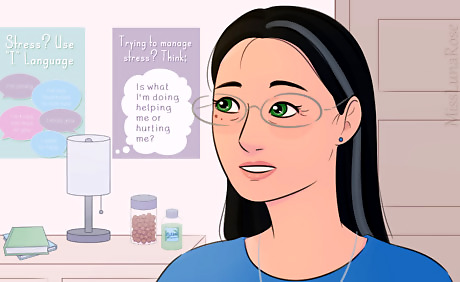
Consider therapy for the child, such as occupational therapy or counseling. A therapist may be able to help with emotional issues, and teach the child more productive coping skills. (They may also have some good advice for you on how to handle the child's outbursts!) Look at taking the child to a specialist who can help. Consider issue-specific counseling if you know what's wrong. For example, if the child turns aggressive after their mother passes away, then a grief counselor who specializes in children may be able to help. Look into occupational therapy. Many parents find this kind of therapy helpful. It can help the child find ways to meet their sensory needs, and it can help teach motor skills, body awareness, daily living skills, problem solving, and other techniques to lessen many day-to-day frustrations at home and in the classroom. Avoid behavior-based therapies that may focus more on controlling the child than on opening a dialogue (e.g. many forms of ABA). ABA may also worsen anxiety symptoms, and this can lead to more aggression.

Try medication as a last resort. Some autistic children do become calmer and less stressed with help from medication; however, it is highly experimental. If you are doing everything listed above, and the child is still struggling, it may be time to talk to your pediatrician about whether medication could help.
Coping with Aggression
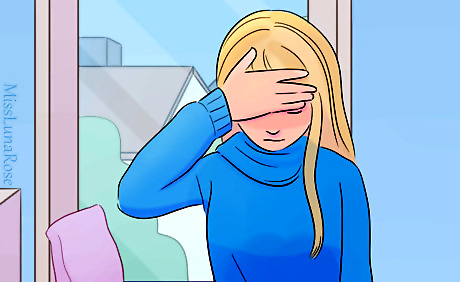
Allow yourself to feel your feelings. When you're in a tough situation, and a child is suffering, it's natural to be upset. You may feel frustrated or worried about the problem.

Avoid toxic messages about the child. Some autism "experts" act like autistic children are burdens or monsters who victimize their parents. They may tell you to be cruel or violent towards your child. This isn't helpful to you or the child.
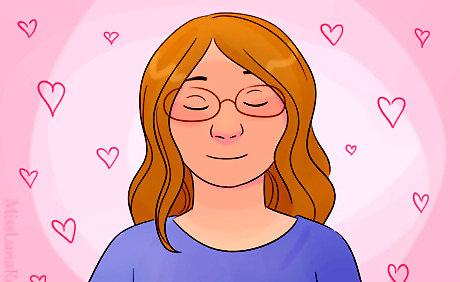
Stop blaming yourself for not being perfect. No one, autistic or not, gets to have a perfect life with perfect caregivers. Kids who are raised by good people will still have bad moods and bad days. This is not a reflection on you, and does not make you a bad parent or caregiver. Kids have bad days. Kids have bad moods. This happens. It doesn't mean you did something wrong. There is no need to take it personally. If you blame yourself, your child may notice this and begin blaming themselves too, thinking that they are a disappointment. Forgive yourself, and this will help your child forgive themselves.

Recognize that things will likely get better. As the child learns communication skills, and better ways to express difficult emotions, the aggression is very likely to decrease or disappear altogether. It will take time, and it will be hard. But don't give up hope that it will happen.

Take time for yourself. If you're completely frazzled, you're not doing yourself or the child any favors. You need to recharge, just like the child does. Autistic children can usually tell when a caregiver is stressed. Be a good role model and employ some self-calming strategies, or take a break. Ask yourself what could help you right now: coffee? a hug? a warm shower? If you don't have enough people available to help with caregiving duties, look into respite care. There are various support programs available, often run through the state government, to provide short-term care so that primary caregivers can take a break.

Don't be afraid to ask for help. You don't have to handle this problem alone. Talking with other parents, and with autistic people who had similar problems, can help you figure out what to do. Using a fake name, post a description of your child's problems in #AskAnAutistic, where autistic people who had or have similar problems can offer advice and ideas.
















Comments
0 comment